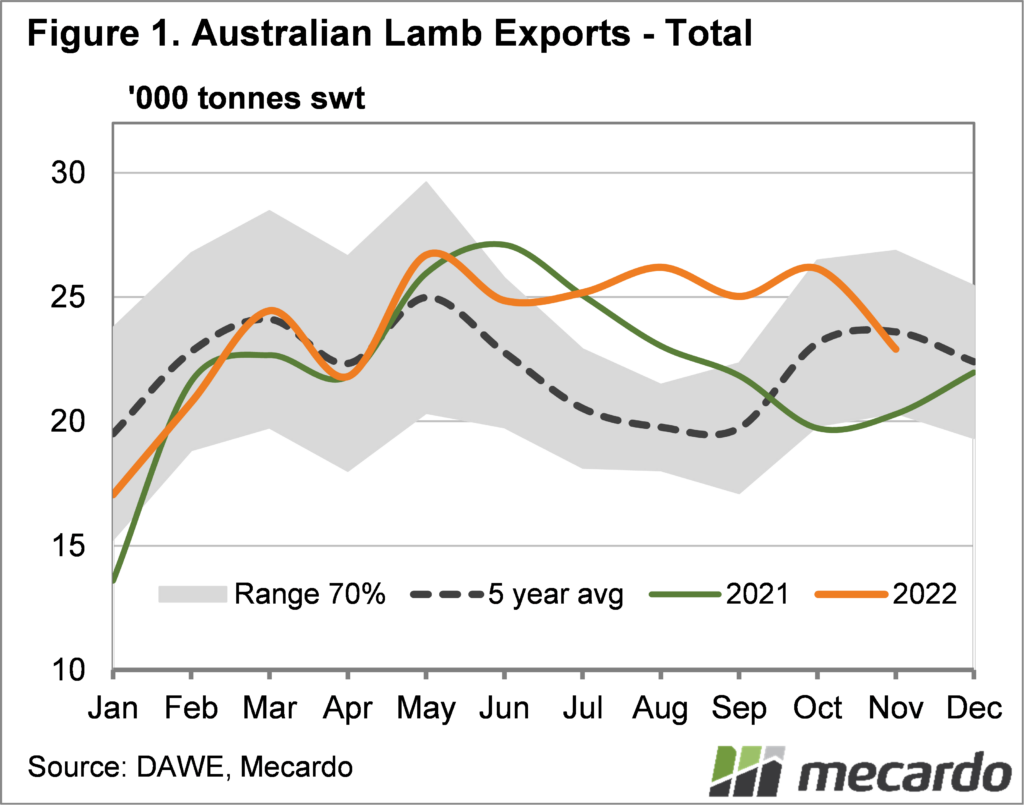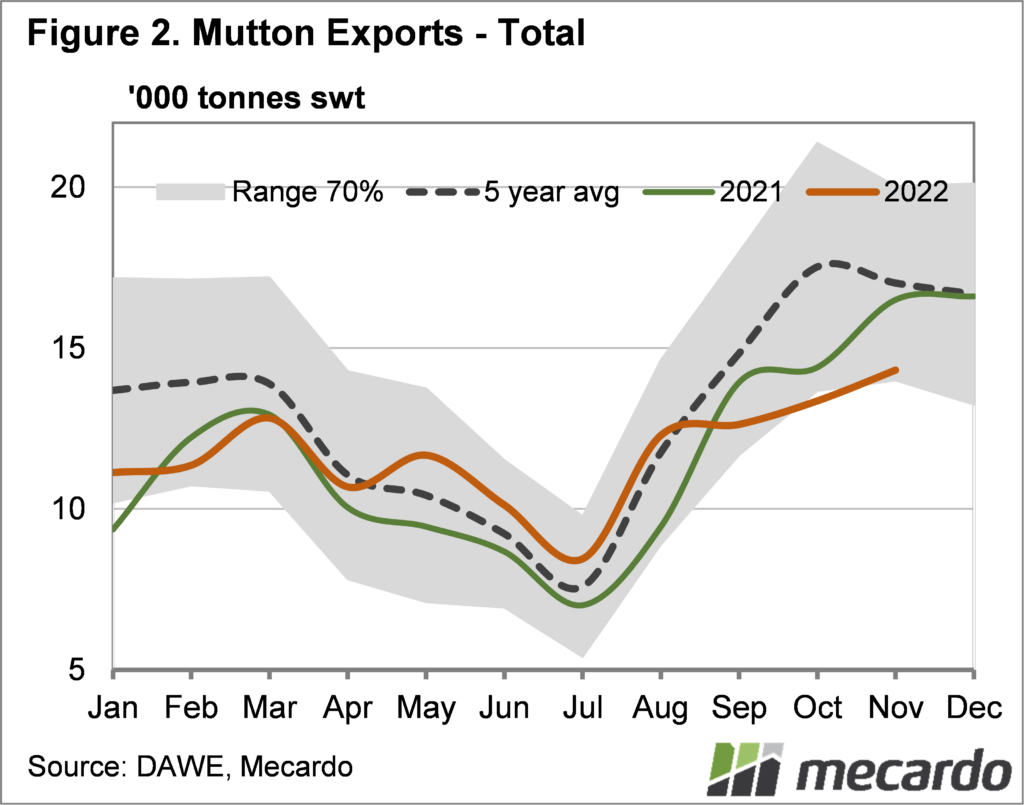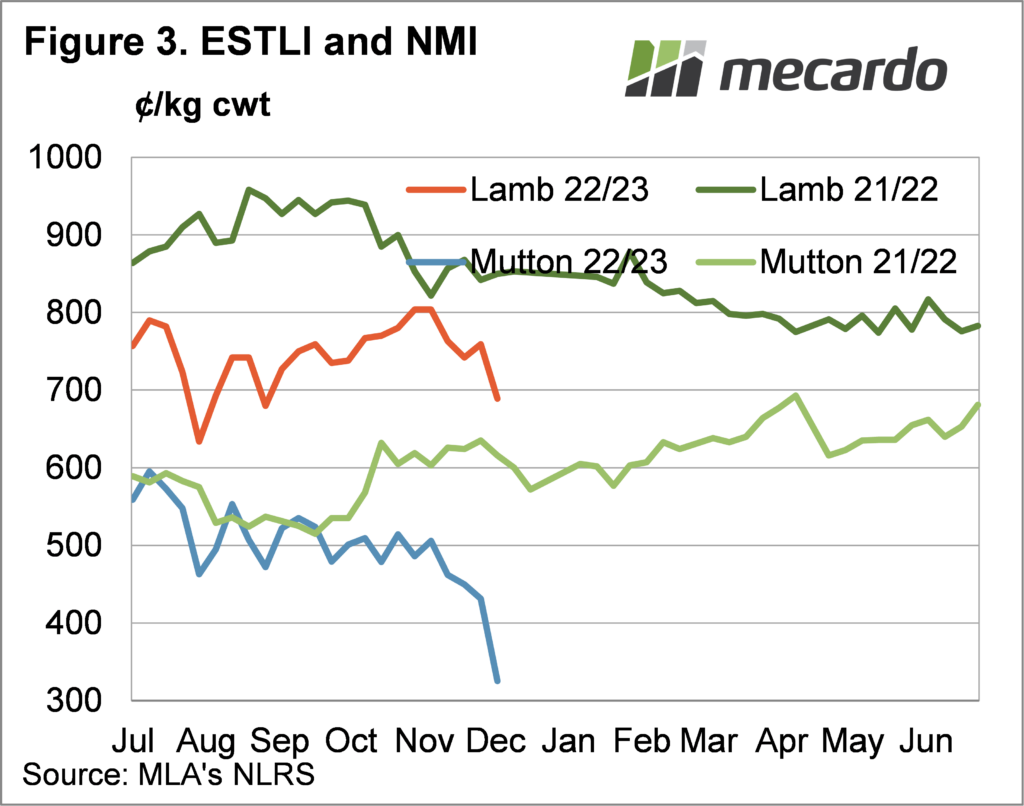It was an interesting week in sheep and lamb markets, the falls in the market were hardly unprecedented. It was only back in July when lambs prices last collapsed, and we saw something similar in October last year. This week we delve into export data for answers, and it’s not looking pretty.
Over the last 10 to 15 years the markets for Australian lambs have shifted. Domestic consumption used to account for more than 55% of production. In 2021 we only ate 33% of lamb production locally. Like beef and mutton, the major driver now for lamb prices is export demand.
The latest export figures for November somewhat confirm what the anecdotal evidence has been suggesting. Figure 1 shows November lamb exports were down 12% on October. The main contributor to lower exports was the US market, which took 24% less lamb.
We reported around a month ago that prices for cheaper cuts to the US were weakening, and this has extended to more expensive ones now. The quote for Australian Chilled Racks was last week the equivalent of $43/kg in our terms, down from $47 in August.
It’s worth noting that lamb exports were above last year’s levels in total and to the US. The problem might be oversupply.
Lamb slaughter rates were similar in November compared to October, which when combined with lower exports means either more lambs heading to domestic markets or ending up in freezers.
Mutton exports for November were up on last month, but down 13% on November last year (figure 2). This is despite sheep slaughter being at or above last year’s levels for much of October and November.
There is basically no domestic market for mutton, so when export demand wanes, it has nowhere else to go.
When we add in the fact that demand for store stock is at an all-time low, we get a perfect storm of strong supply, weak export demand and weak restocker demand. The result for lamb doesn’t seem too bad compared to a National Mutton Indicator (NMI) at a 4 year low (figure 3).
What does it mean?
Part of the problem might be China’s continued Covid lockdowns causing demand and logistics issues in one of our major markets. We’ve seen waves of this before and markets recovering quickly. US issues with lamb are a worry, as it is demand at the consumer level that has weakened.
Sheepmeat producers can hope that lower prices stimulate some export demand in place like the Middle East. Exports are much lower than they used to be to the Middle East, which has been supply and price related. Otherwise, tell your city friends and relatives to start eating more lamb, 6.4kgs per year is not enough!
Have any questions or comments?
Key Points
- Lamb and mutton export figures confirm demand is weakening in export markets.
- Weaker export demand, stronger supply and waning restocker demand has seen markets tank.
- With sheepmeat much cheaper than last year on export markets, they should find a floor
Click on figure to expand
Data sources: DAFF, MLA
Photo Credit: Joanne Edson.















